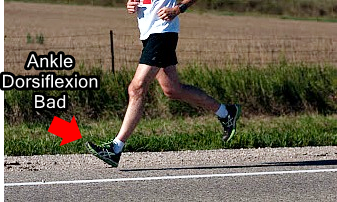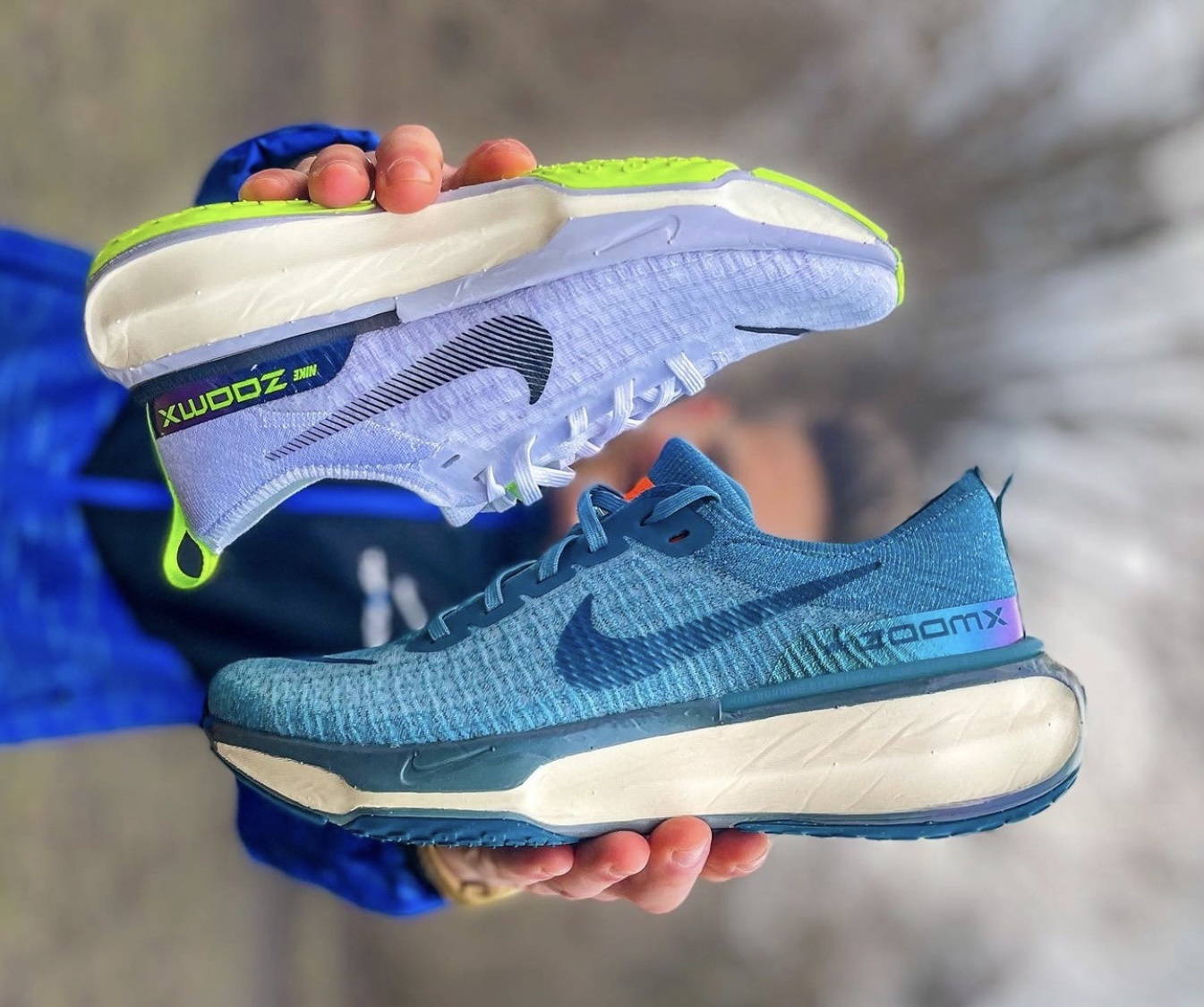The best way to counter the problem of heel striking when running is to stop lifting the front of your foot (an action called ankle dorsiflexion) upon and at touchdown. The more you lift the front of your foot upon landing, the greater the likelihood you’ll heel strike.

The make cause of excessive ankle dorsiflexon at landing in running are running shoes that have more padding under the heel than the front of the shoes, shown below:

All heel strike runners consistently show ankle dorsiflexion at touchdown, suggesting that performing the opposite –ankle plantar flexion–acts as a deterrent from heel striking, allowing for a more anterior foot strike.
- For example, barefoot runners land with less impact because they don’t heel strike due to having a more controlled dorsiflexed ankle as compared with shod runners.
You want to land on your forefoot when you run, so there’s no need to lift your forefoot back like you would to heel strike.
Research in recent years has suggested that ankle dorsiflexion at touchdown during running increases the risk of the following injuries:
Plantar Fasciitis – Constantly lifting the forefoot, repetitively stretches the plantar fascia.
Anterior Compartment Pain – Shin splints is one of the most common injury heel strike runners suffer from.
Achilles Overuse Injury – Dorsiflexion of the ankle at each step increases the range of motion of the ankle, which is not always a good thing for the Achilles tendon.
Compartmental Syndrome – Researchers have linked repetitive dorsiflexion at touchdown with high intramuscular pressure of the lower leg.
Tarsal Tunnel Syndrome – Dorsiflexion upon touchdown overtime may compress the posterior tibial nerve.
Medial Calf Pain – Dorsiflexed ankle is a classic trait implicated in medial calf soreness.
Bretta Riches
BSc Neurobiology; MSc Biomechanics candidate, ultra minimalist runner & founder of RunForefoot. I was a heel striker, always injured. I was inspired by the great Tirunesh Dibaba to try forefoot running. Now, I'm injury free. This is why I launched Run Forefoot, to advocate the health & performance benefits of forefoot running and to raise awareness on the dangers of heel striking, because the world needs to know.
Latest posts by Bretta Riches (see all)
- Cushioned Running Shoes Found to Be Bad for Ankles - 23/04/2024
- Forefoot Running and Achilles Pain - 19/04/2024
- Does Foot Strike Really Matter in Running? YES! - 17/04/2024

1vivas
3znwzm